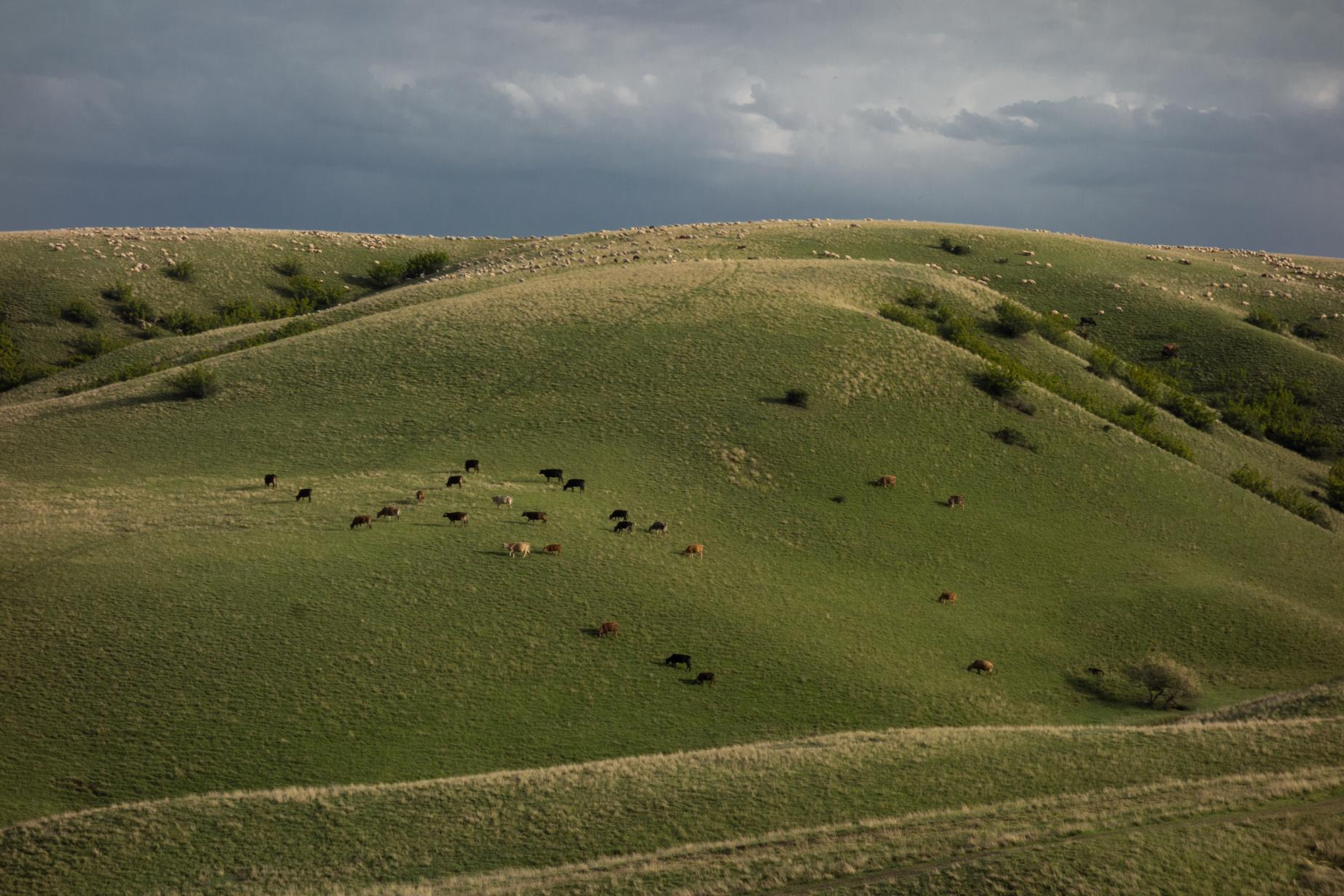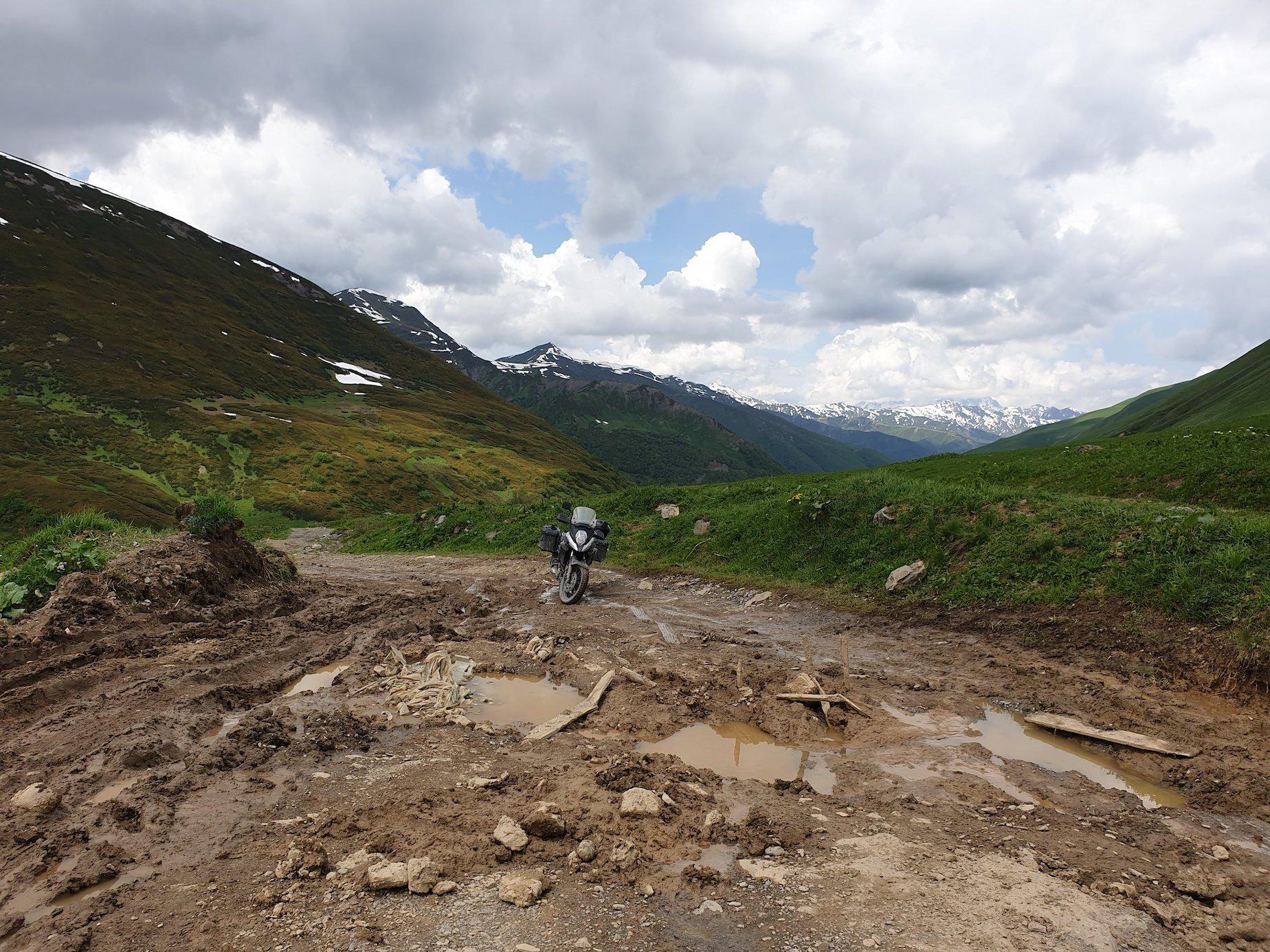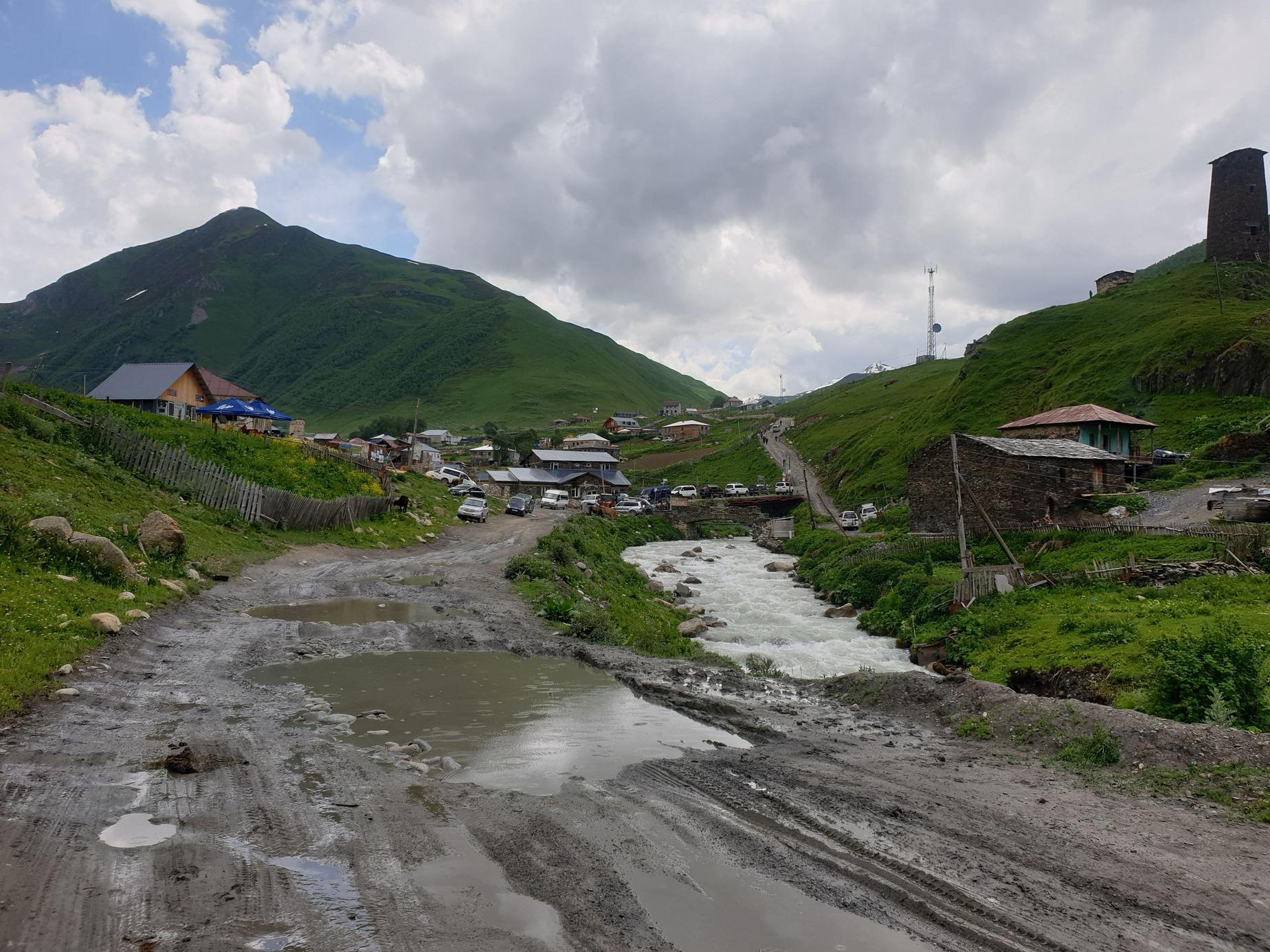Driving in Georgia (the country)
Posted on
On my motorcycle trip from Germany to Mongolia, I ended up spending much more time than expected in Georgia. Over 6 weeks in the summer of 2019, I clocked several thousand kilometres on Georgian roads. These are the things that I learned.
Road rules
If you can drive in Europe, you can drive in Georgia. The signs and rules are the same. The only notable difference is how roundabouts work: those who enter the roundabout have priority. Usually, this is properly indicated.
Paperwork
Every vehicle in Georgia must have liability insurance. Your car insurance probably doesn’t cover you in Georgia. If you don’t have valid insurance when you leave the country, you will need to pay a 100 lari fine when you reenter the country. You should always keep the proof of insurance with you in the vehicle. If the police stops you, they will want to see it.
Your car insurance probably doesn’t cover you in Georgia, so you must get insurance after you cross the border. Get your insurance directly from the Compulsory Insurance Center. You will pay 30 lari for 15 days, 50 lari for 30 days, and 90 lari for 90 days. It’s a bit cheaper for a motorcycle. Ignore the insurance sellers trying to drag you to their office, and the places with nearly identical logos and name.
You do not need a Carnet de Passage or an International Driving Permit to drive in Georgia. My German driving licence was enough.
Road conditions
The road conditions in Georgia vary from very good to abysmal, sometimes on the same stretch of road. Unmarked potholes and gravel patches are a common occurrence.
The E60 highway is goes from West to East and connects major cities. The speed limit is 110 km/h, and the surface is very smooth. It’s the fastest road in the region, but it’s not finished yet. The completed sections are connected by single-lane regional roads.
The Georgian Military Highway goes from Tbilisi to Russia through the Caucasus mountains. It’s in a good condition. The pavement is smooth from Tbilisi to Stepantsminda near the Russian border. However, the road sometimes closes in the winter due to bad weather.
Cities and major tourist destinations are connected by smooth, single lane paved roads. You can drive on them with a regular car. The roads will sometimes turn to gravel, usually in patches a few hundred meters long.
The roads from Tbilisi to Azerbaijan are in great condition. You can drive on them with any vehicle.
The road from Tbilisi to Lake Paravani has a 15 kilometre stretch of bumpy gravel. You can drive on that road with a regular car, but you will have to go very slowly.
The road from Tbilisi to Gori is in excellent condition. You will be on the highway most of the time. I suggest you to take the scenic route just a little south instead. It’s much more pleasant, and that road is also in decent condition.
The road from Tbilisi to David Gareja is smooth at first, but very bumpy in the last 30 km. You can still drive slowly with a passenger car, but a 4x4 is preferable.
The roads from Tbilisi to Kutaissi is in great condition. You can drive on it with any vehicle. Half of it is on the E60, and half of it on single-lane regional roads. The regional roads are very busy, and you might spend a lot of time behind trucks.
The road from Kutaissi to Mestia and the Svaneti region is paved with a few rare patches of gravel. There are lots of curves, but there is sometimes gravel on the pavement, so you must be careful. You must drive to Mestia from the West. The Eastern approach is only suitable for 4x4 vehicles. The section from Mestia to Ushguli is mostly dirt. It rains almost daily, so it has many deep puddles surrounded by shallow mud. Passenger cars might struggle on it, and it’s too slippery for motorcycles with street tires. The section from Ushguli to Lemzagori is even worse. It’s only suitable for 4x4 vehicles and skilled motorcyclists. The section from Lemzagori to Kutaissi is fine, with only a few gravel sections.
The road from Batumi to Bordjomi is pretty bad. Most of it is unpaved, and very bumpy. You will need a 4x4 vehicle to go there.
The road through the Borjomi-Kharaguli National Park does not exist. Although it shows on Google Maps, part of it is an unfinished dirt road, and part of it simply does not exist.
Driving in Tbilisi is not so bad. The E 117 is a complete shitshow, but driving in the rest of the city is very manageable. The traffic moves slowly, and the drivers are not as aggressive as in Istanbul or Baku.


Driving standards
To put it mildly, drivers in Georgia are fucking bonkers. The greatest threat on Georgian roads is not the cows or the potholes, but the other drivers. Georgian roads are among the deadliest for a reason.
Here are a few behaviours you should be wary of:
- They overtake very dangerously. They will overtake you in a curve. They will overtake you from the right. They will overtake you without even changing lanes. I often needed to swerve to avoid cars coming straight at me from the opposite direction. Flashing your lights or honking at them has no effect. They will finish their manoeuvre, so get out of their way. Even the police does it.
- They do not indicate, period. Even when they do, it doesn’t mean anything. They’ll indicate right, then violently swerve left, or leave their indicator on for several kilometres.
- If there is a space for their car, they will fill that space. If there isn’t, they will honk until there is. They drive between lanes, on the emergency lanes and in the opposite direction. There are as many lanes as they can create, especially during rush hour.
- They will swerve into your lane without looking. It’s your responsibility to make space for them. If you see potholes or stopped vehicles in their lane, expect them to violently swerve into yours to avoid them.
- They will stop and block the road for everyone to pick up passengers, or just to chat with a friend.
- Using your phone while driving is forbidden, but nobody cares. Even the police does it.
- Headlights are used to see, not to be seen. Even if it’s getting dark or rainy, they won’t turn their headlights on unless it helps them see better.
- They will sometimes go forward so far that you must let them pass. Georgian roads are on big game of chicken.
- If you’re on a motorcycle, they’ll flash their lights or honk at you just to say hello. Nothing is wrong, just wave back.
In essence, you must expect everyone on the road to act with complete disregard for everyone else. It’s infuriating, but they’re not one angry westerner away from changing their ways. You just have to roll with it and do your best to stay alive.
In relative terms, I found Georgian drivers much worse than Sicilians or Turks, but better than those in Azerbaijan.
Road hazards
Herds of cows, horses, sheep and pigs often walk in the middle of the road. You need to avoid them and other cars who swerve into your lane to avoid them. Cows will not get of the way even if you honk. You just need to be patient.
Speed bumps are common in villages. There is usually a sign to warn you.
Large potholes are also very common, and often come without any warning. If you see rocks, cones or tires on the road, it usually means that there’s a large pothole behind them. Sometimes, manholes are missing their cover, so a tire placed inside them to fill the hole.
Stray dogs hate motorcycles. They will come running and barking at you out of nowhere. If you stop, they won’t try to attack you. They will just stand there, bark some more, then go back to their dog business.

Fuel
The fuel in Georgia is very good, and very cheap. Gas stations are easy to find if you stay on the main roads. They are usually less than 100 kilometres apart. You can choose between regular (92 octane) and premium (95 octane) fuel. Diesel is also easy to find.
Georgian fuel stations are not self-service. You park in front of the pump and an employee will come. Point at the type of fuel you want, and tell them how much fuel you want. You give money to the employee after fuelling up. Some gas stations accept credit cards, but not all of them.
Weather
In the summer, it can get very hot in Georgia. When travelling by motorcycle, the hot weather can become a problem. During my visit, it was consistently between 30 and 35 degrees during the day. It got as high as 40 degrees.
In the mountains, it will be a few degrees cooler, but usually above 20 degrees. It’s usually sunny in the morning, cloudy in the afternoon, and rainy in the evening. Since it rains almost daily in the mountains, dirt roads are often muddy.
Police and photo radars
In 6 weeks, I had zero encounters with the Georgian police. I saw many speed radar warnings, but I have not received any fine for speeding. I drove at up to 140 km/h on the E60, and up to 115 km/h on regional roads. This could be because the speed cameras are pointed at the front plate, which my motorcycle doesn’t have.
Cartography
I used a combination of Google Maps and OsmAnd+ to find my way in Georgia. Google Maps often had incorrect data, but it offered much more accurate time estimates. OsmAnd+ has much better hiking and off-road maps, and it works better offline.
Summary
Driving in Georgia is a necessary evil. The hot weather and the poor driving standards make the drive challenging at times. However, there are plenty of nice landscapes to enjoy, especially up North in the mountains. If you are a fan of off-road driving, Georgia won’t disappoint you either.